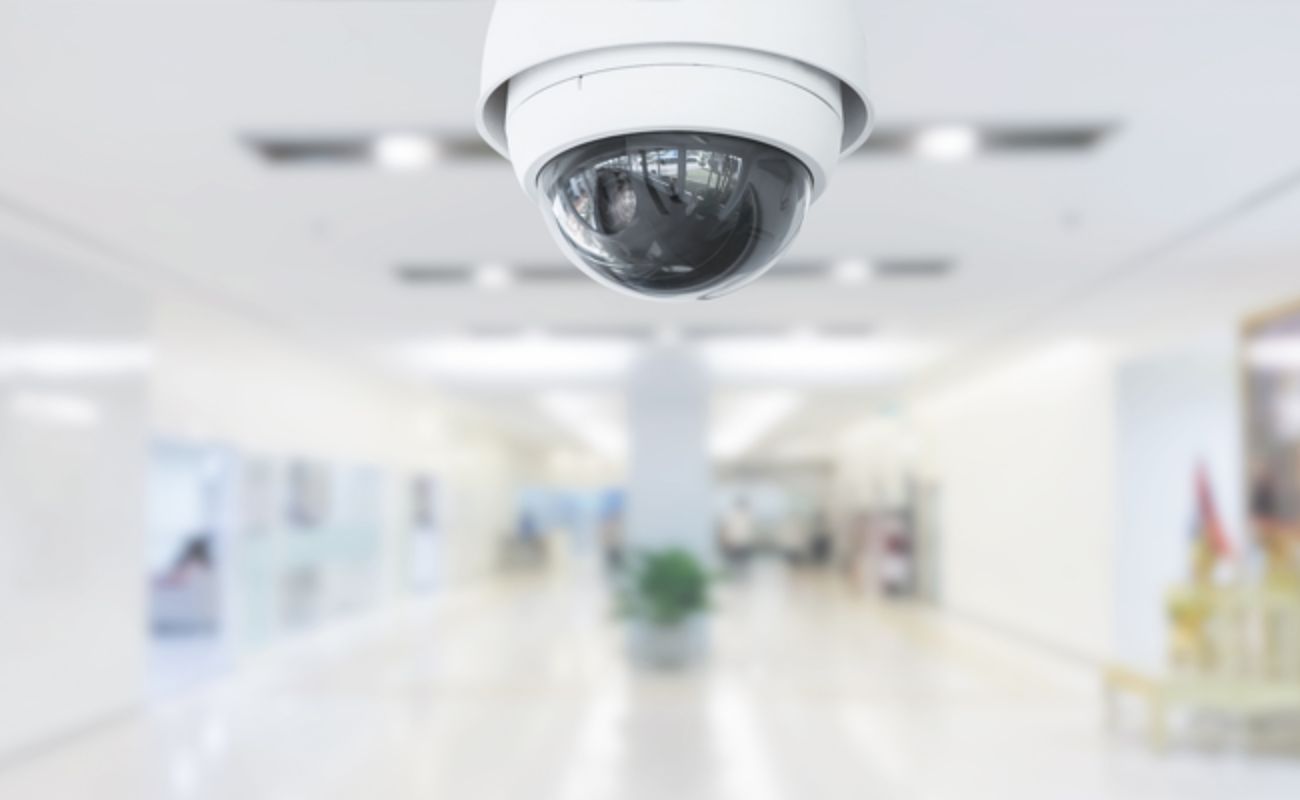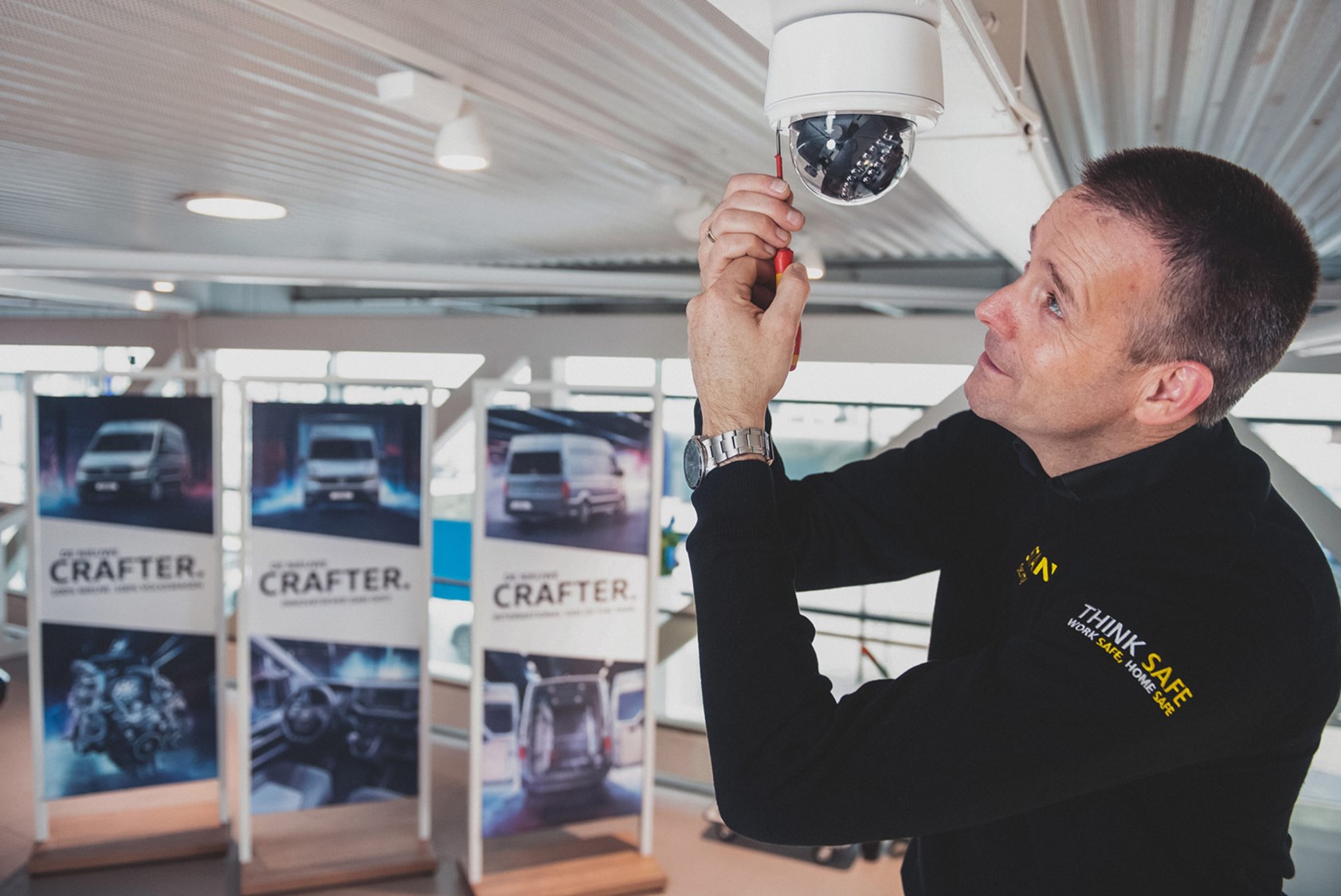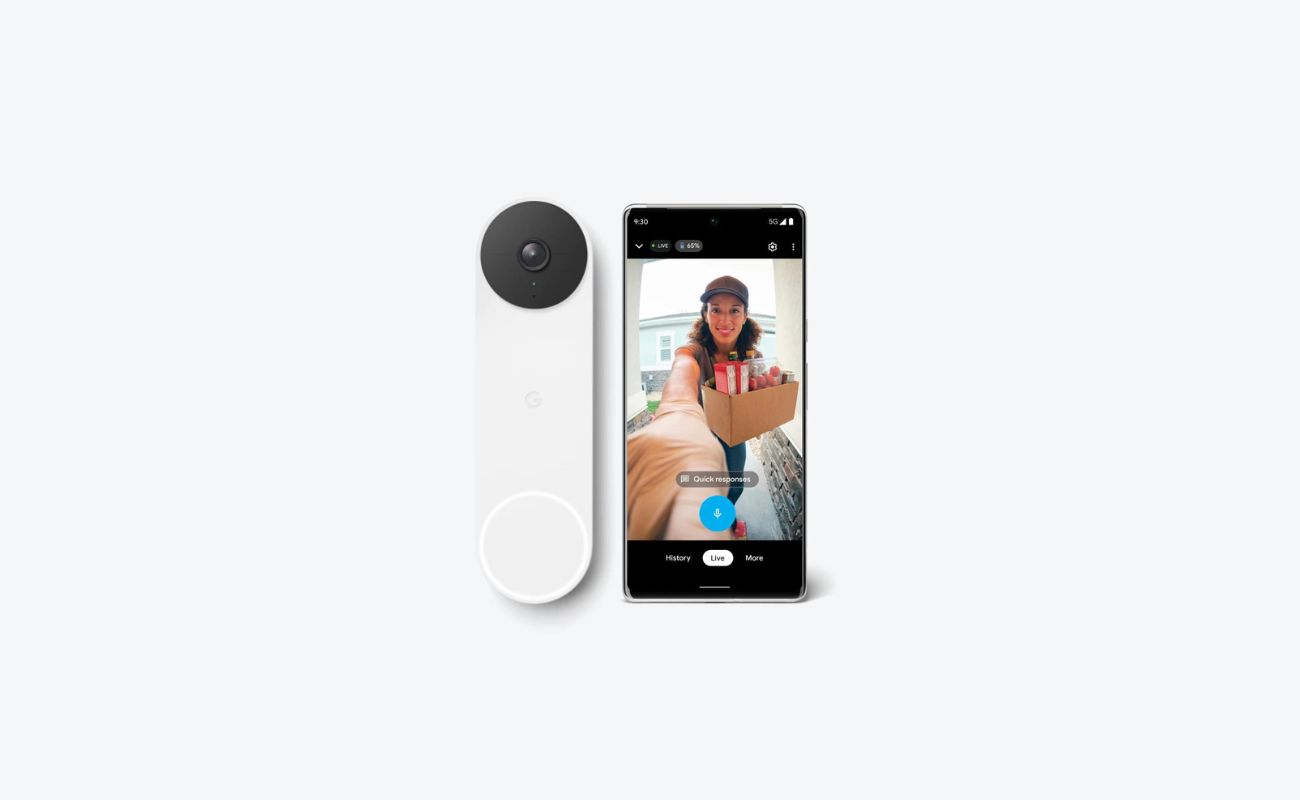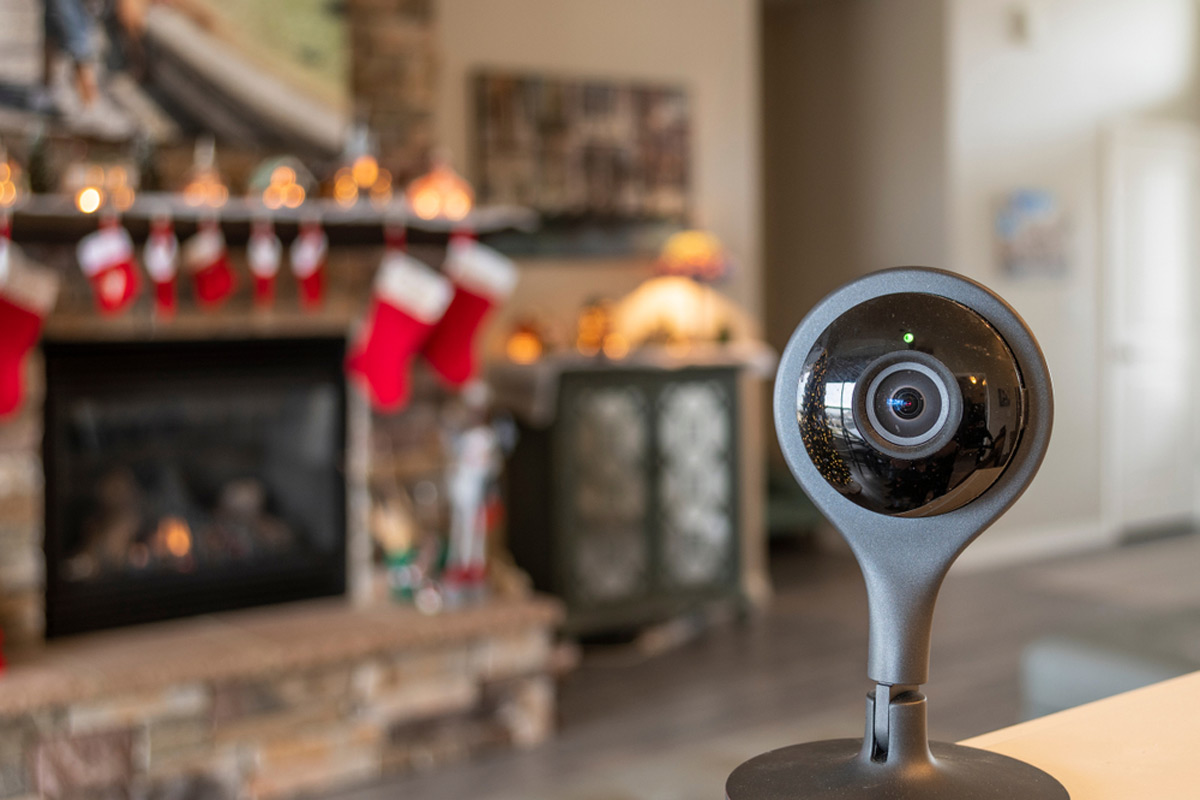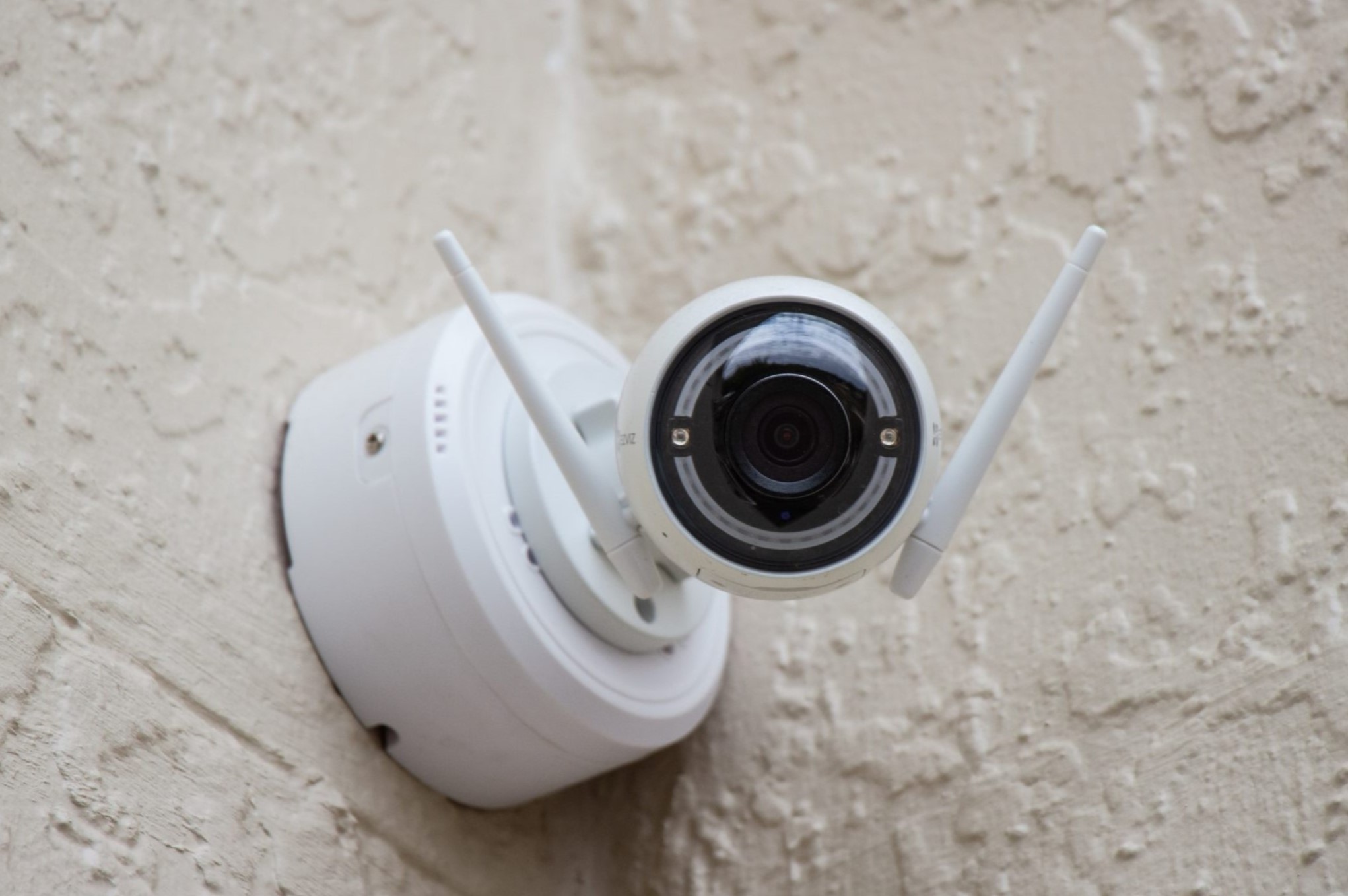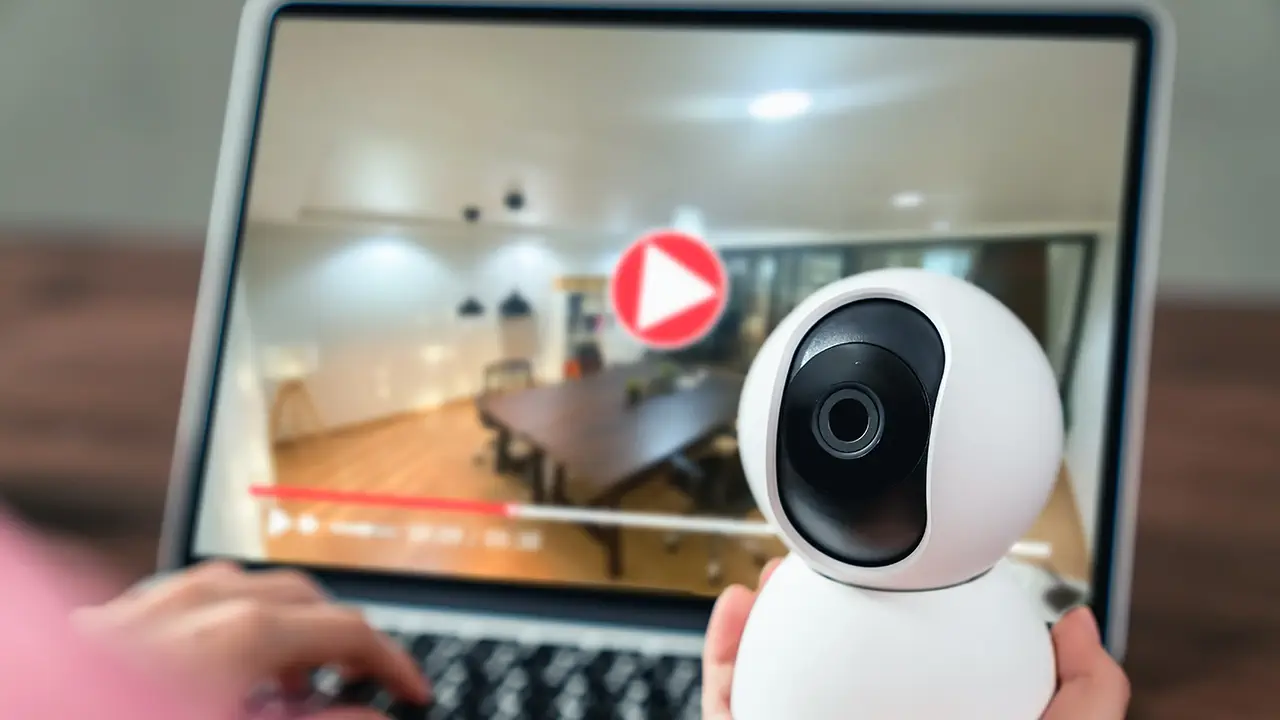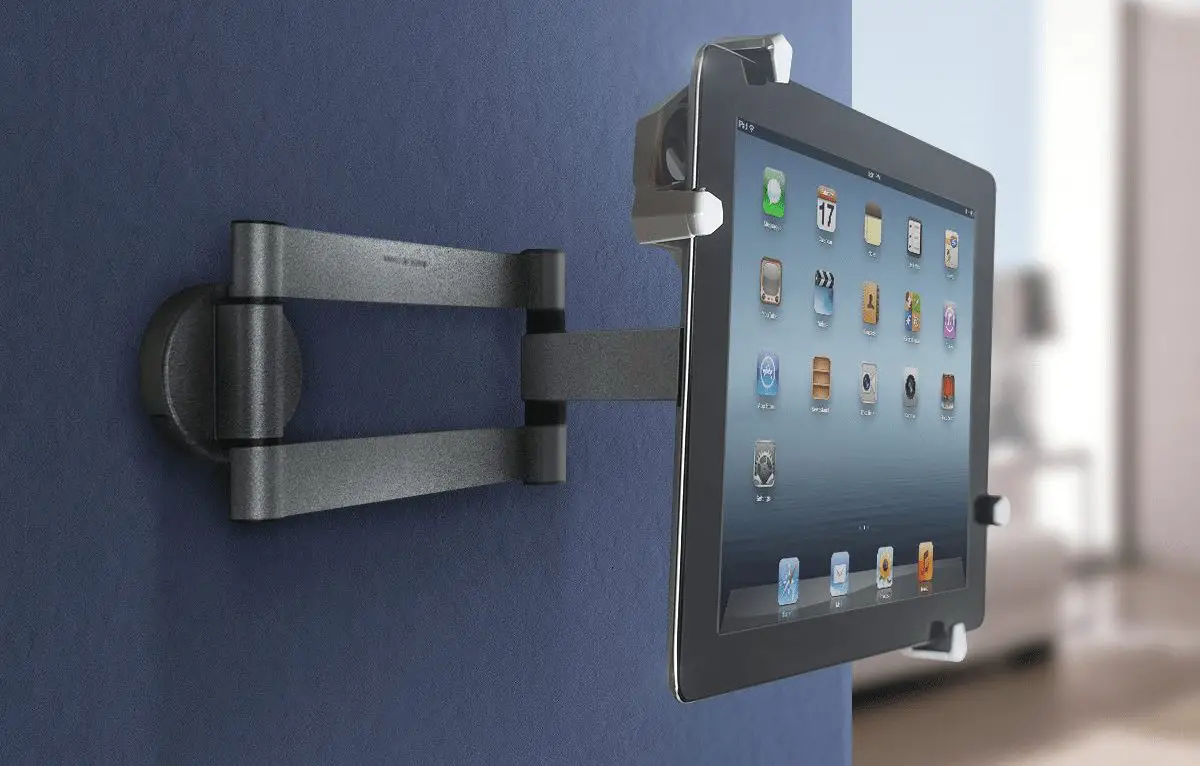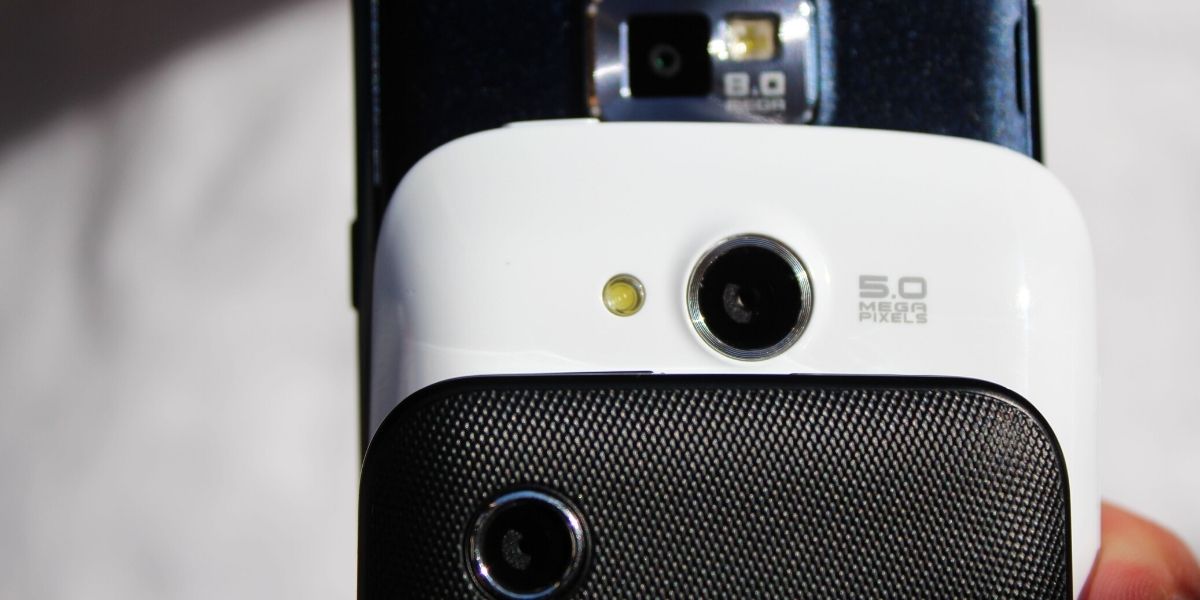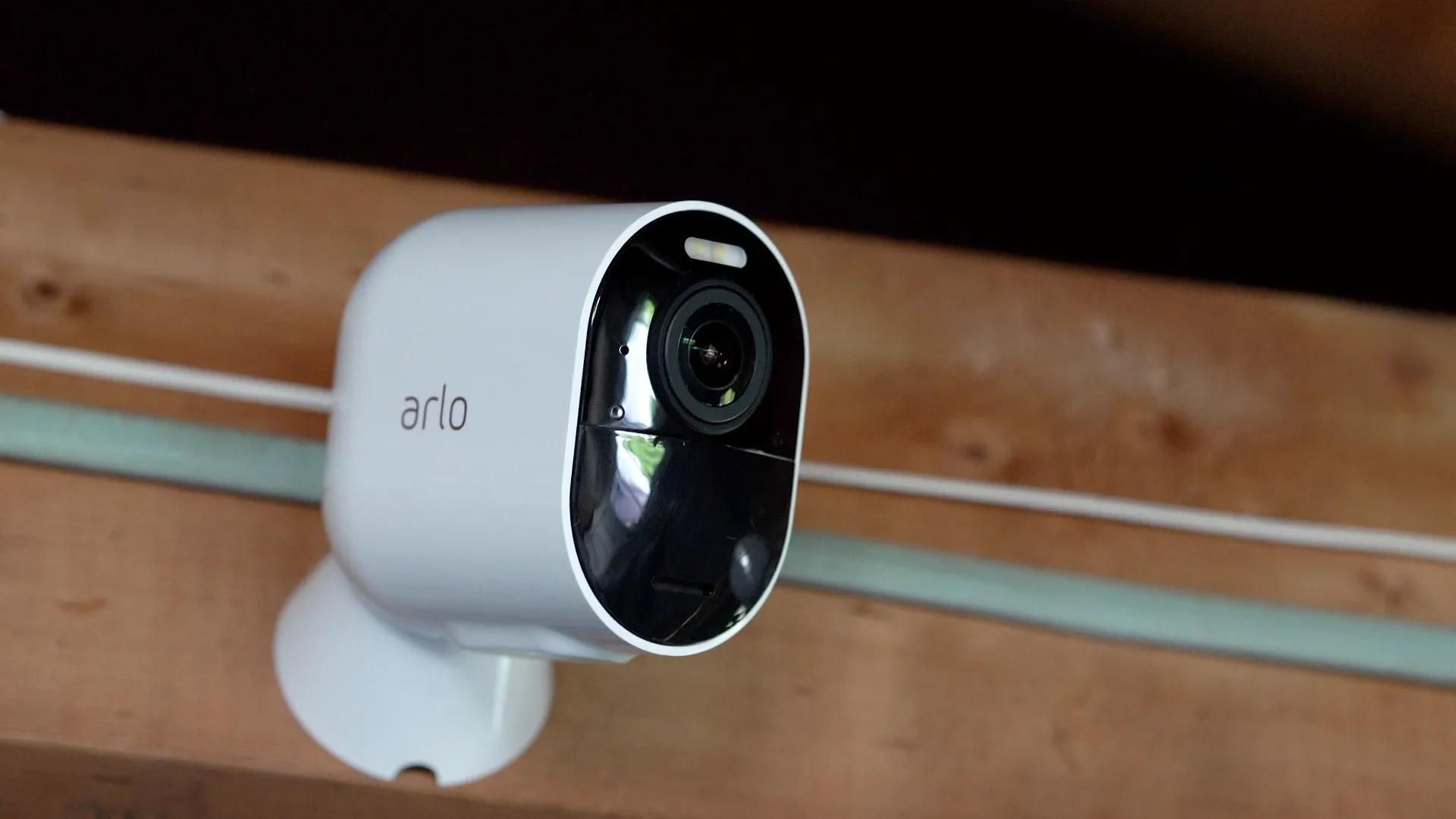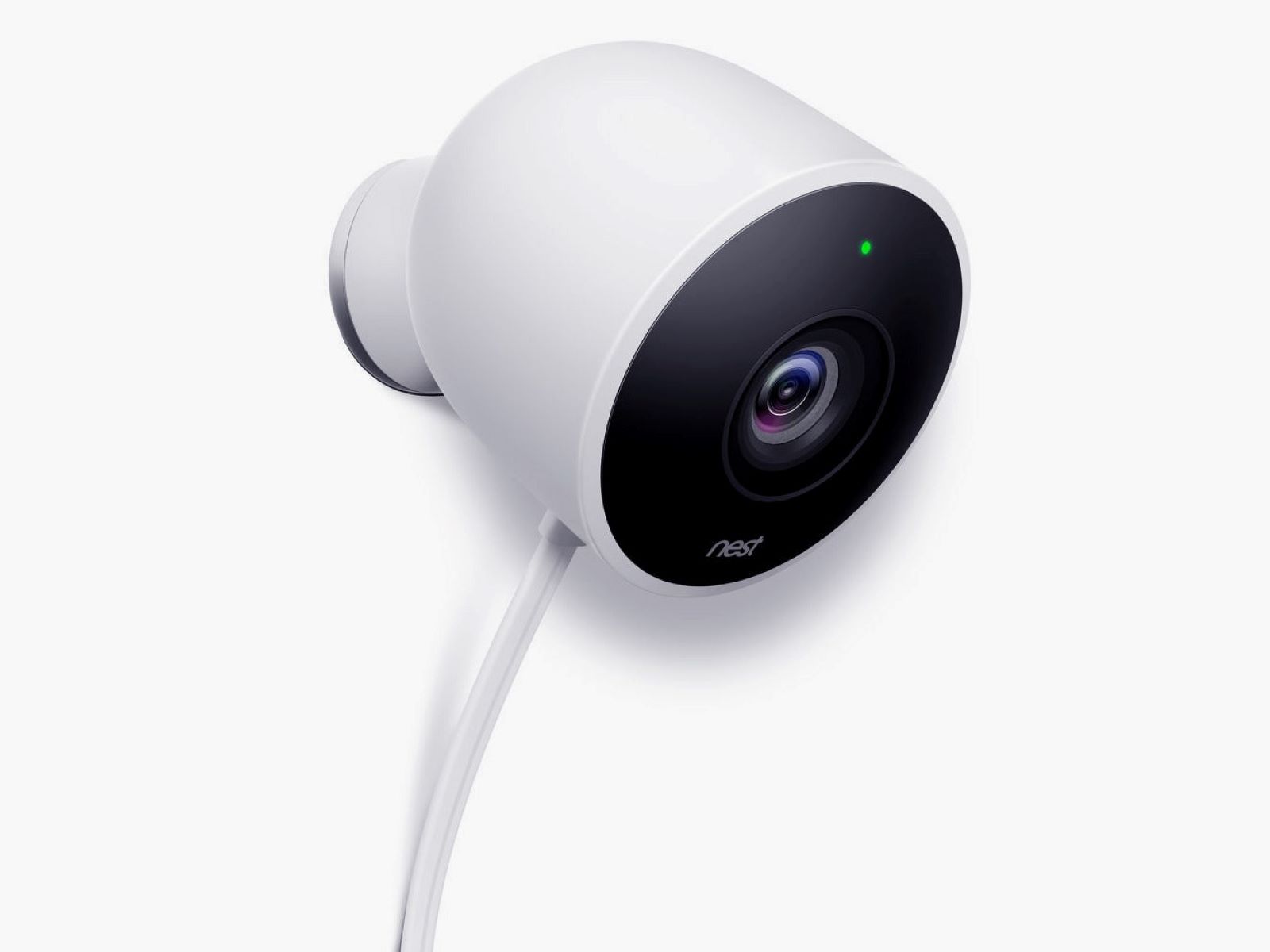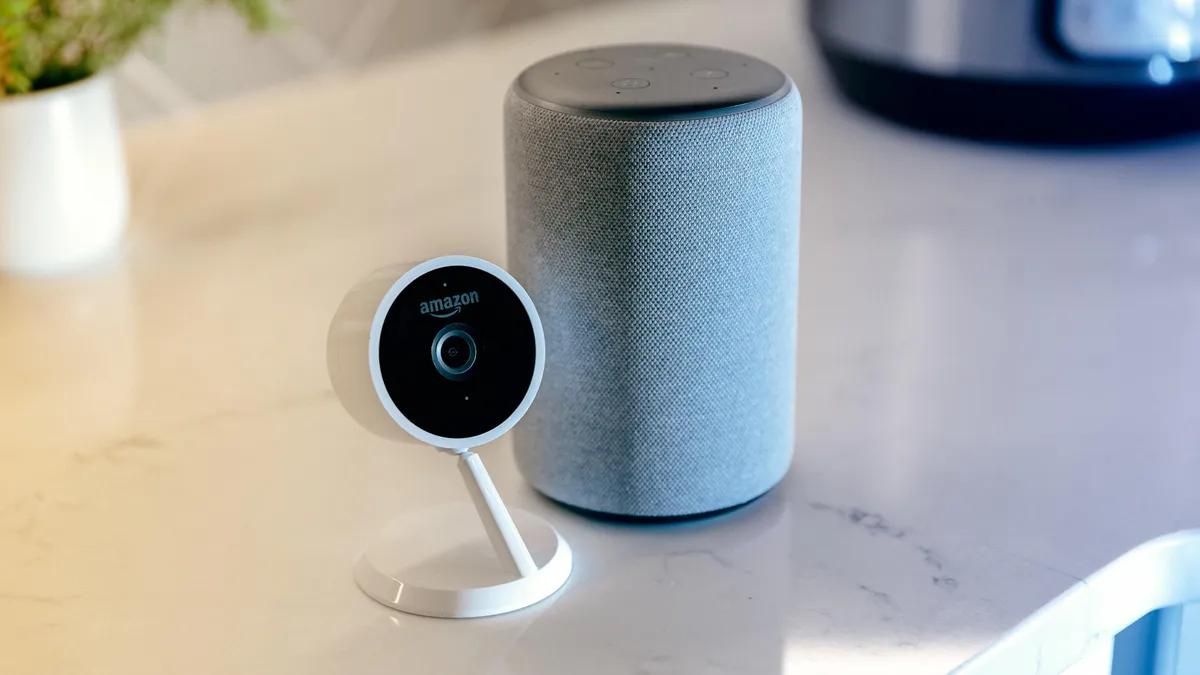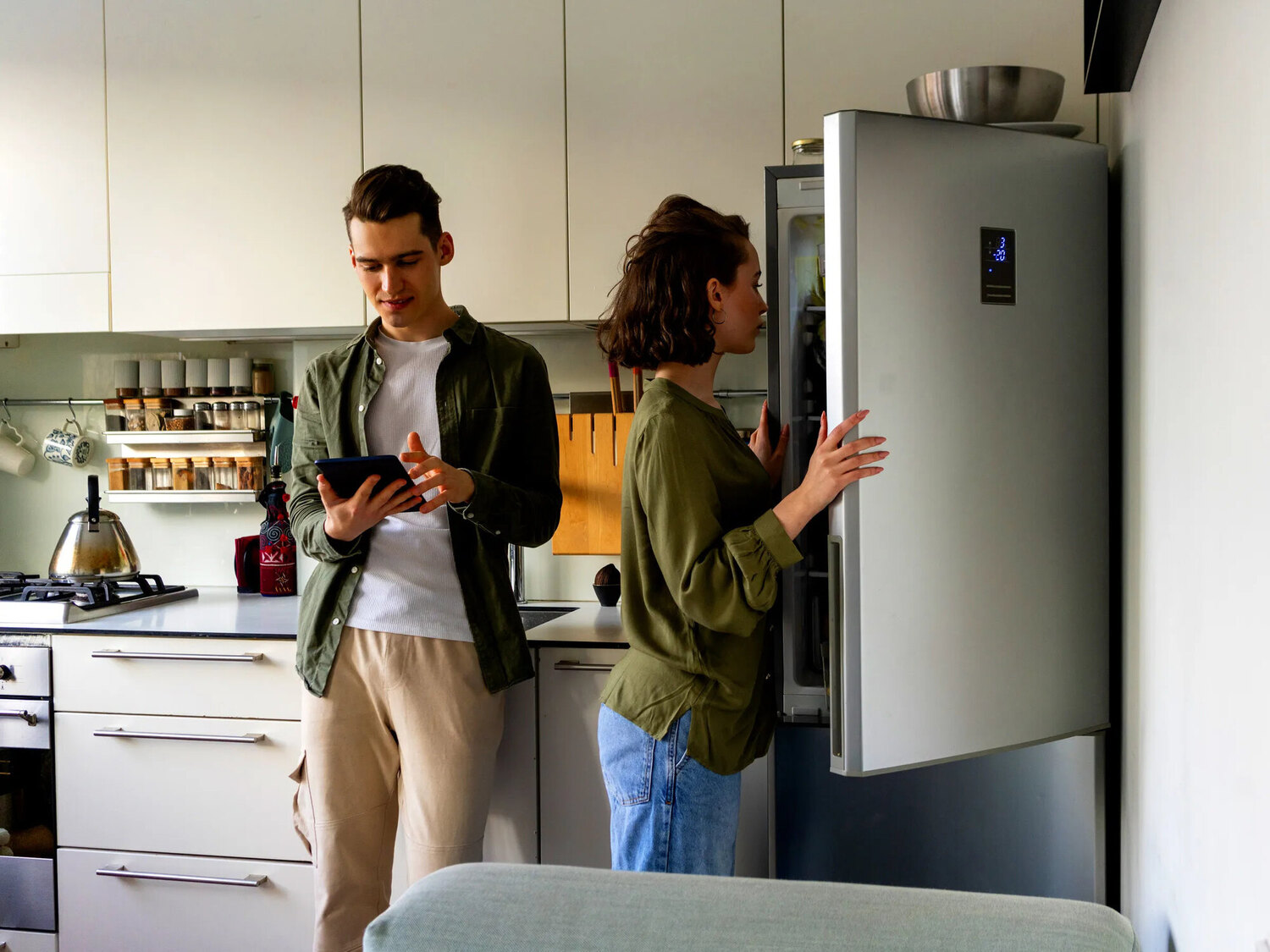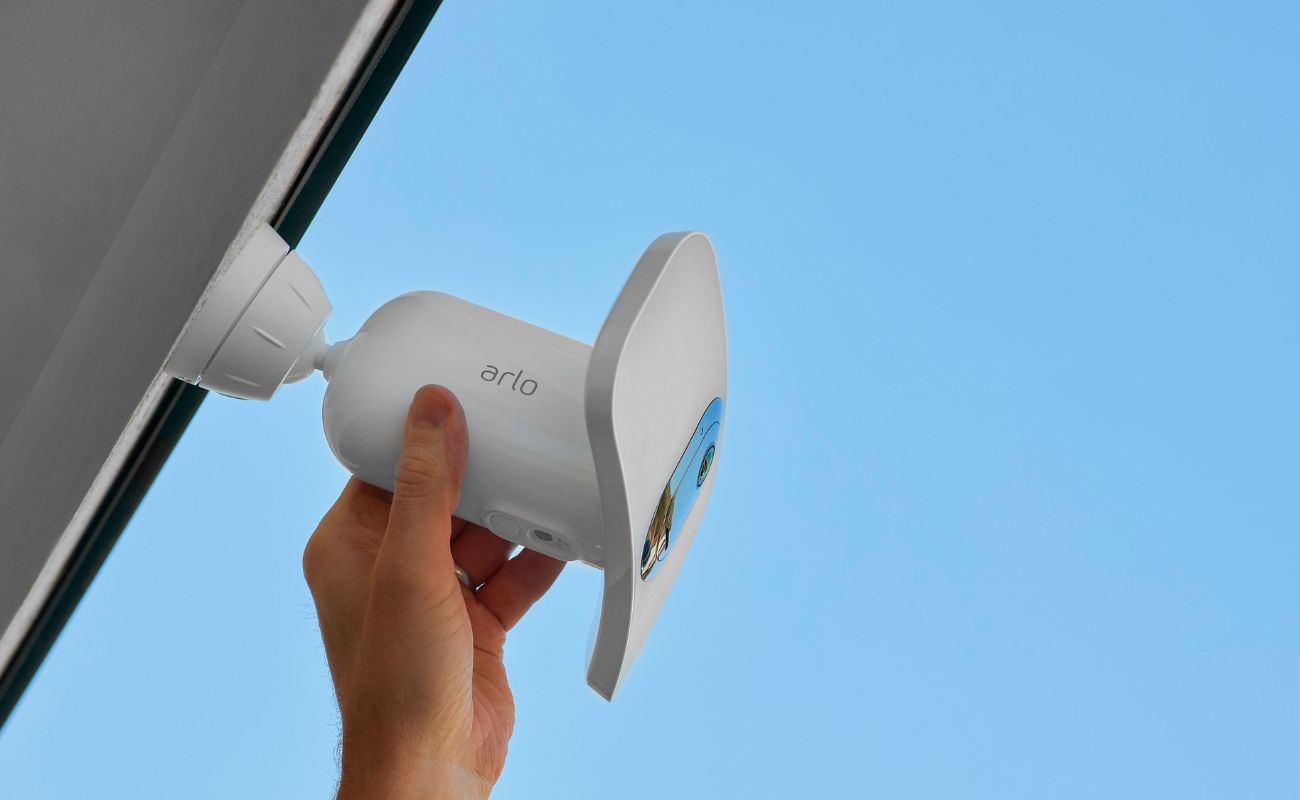Home>Home Security and Surveillance>How Much Power Does A Security Camera Use
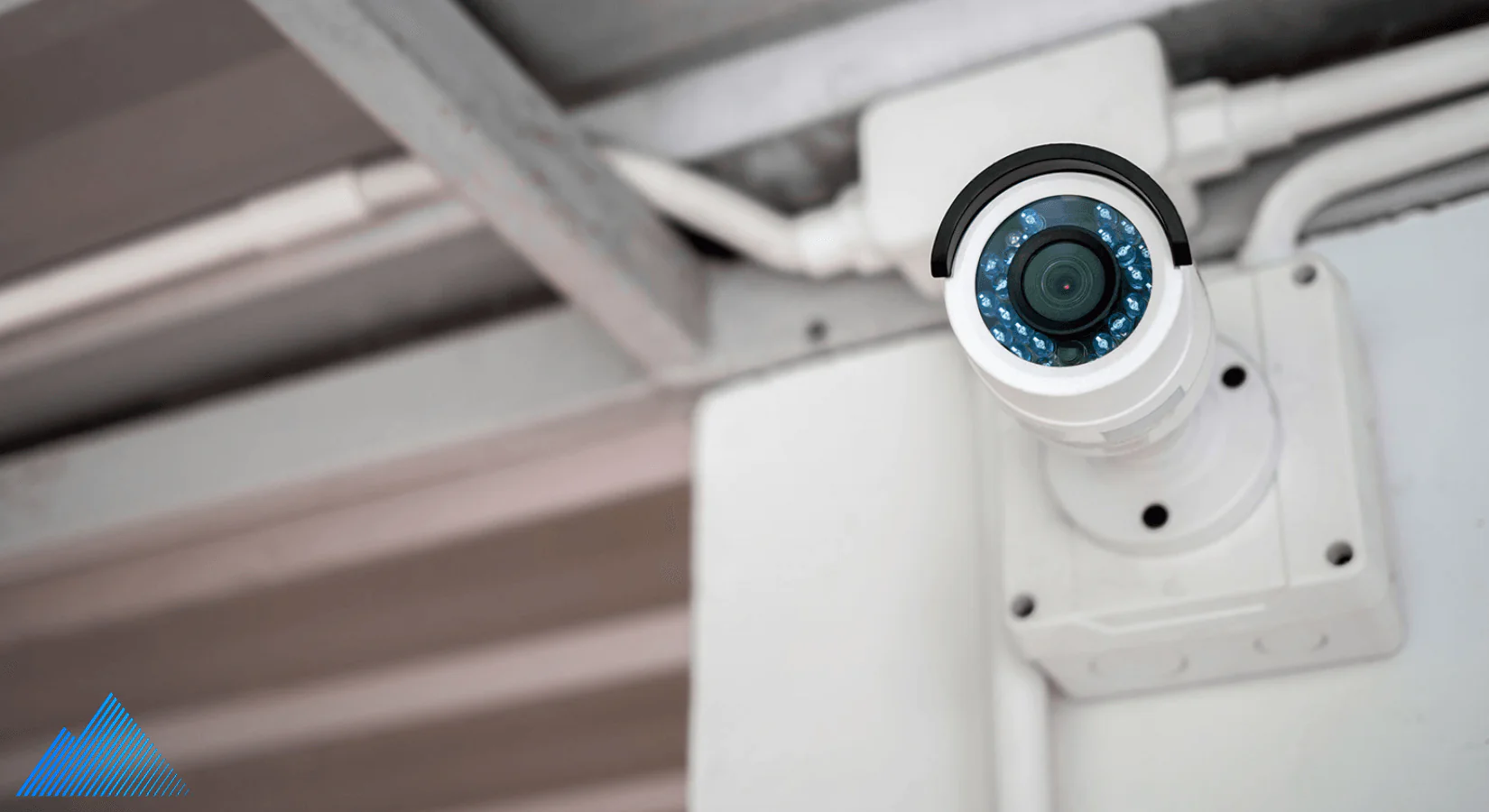

Home Security and Surveillance
How Much Power Does A Security Camera Use
Modified: September 1, 2024
Discover how much power a security camera consumes. Learn about energy-efficient home security and surveillance systems to minimize energy usage and increase sustainability.
(Many of the links in this article redirect to a specific reviewed product. Your purchase of these products through affiliate links helps to generate commission for Storables.com, at no extra cost. Learn more)
Introduction
Home security and surveillance systems play a vital role in keeping our homes and loved ones safe. As technology advances, security cameras have become an essential component of these systems. They provide an extra layer of protection by capturing footage of potential intruders or suspicious activities.
However, one important aspect to consider when installing security cameras is the power they consume. Understanding the power requirements and factors affecting power consumption can help you make informed decisions about the type and number of cameras to install, as well as how to manage their power usage efficiently.
In this article, we will delve into the world of security cameras and explore their power consumption. We will discuss the factors that affect power usage, different types of cameras and their power requirements, common features that impact power consumption, and tips for reducing power usage. By the end, you will have a comprehensive understanding of how much power your security cameras use and how to optimize their energy consumption.
Key Takeaways:
- Security cameras consume varying amounts of power based on factors like resolution, night vision, and motion detection. Understanding these factors helps in choosing energy-efficient cameras and optimizing power usage.
- Factors like camera type, features, and placement impact power consumption. By considering these factors and implementing strategies like adjusting motion sensitivity and utilizing power-saving features, power usage can be minimized effectively.
Read more: How Much Data Does A Security Camera Use
Factors Affecting Power Consumption
Several factors influence the power consumption of security cameras. Understanding these factors will help you estimate the amount of power your cameras will require and make informed decisions about power management.
1. Camera Resolution: Higher resolution cameras, such as those with 4K or 1080p capabilities, typically consume more power than cameras with lower resolutions. The increased pixel count requires more processing power and data transmission, resulting in higher power consumption.
2. Infrared (IR) Illumination: Many security cameras are equipped with infrared LEDs to provide night vision capabilities. While these LEDs allow for clear footage in low-light conditions, they also consume additional power when activated.
3. Frame Rate: The frame rate is the number of individual frames that a camera captures per second. Higher frame rates require more power as the camera needs to process and transmit a larger amount of data.
4. Compression Format: The compression format used by the camera also affects power consumption. Cameras that use more efficient compression formats, such as H.265, require less bandwidth and power compared to cameras using older formats like MJPEG.
5. Motion Detection: Security cameras with motion detection capabilities consume additional power when detecting and recording motion. This feature is especially useful for conserving storage space and filtering out unnecessary recordings, but it comes at the expense of increased power consumption.
6. PTZ (Pan-Tilt-Zoom) Functionality: Cameras with PTZ capabilities consume more power than fixed cameras due to the mechanical components required for panning, tilting, and zooming. The constant movement and adjustments require additional energy.
7. Network Connectivity: Security cameras that are connected to a network, either through Wi-Fi or Ethernet, consume more power than standalone or battery-powered cameras. Transmitting data over a network requires constant energy consumption.
It’s important to consider these factors when choosing security cameras and estimating their power requirements. By understanding how each factor affects power consumption, you can make informed decisions about the type and features of cameras that best fit your needs while managing power consumption effectively.
Types of Security Cameras and Their Power Consumption
Security cameras come in different types, each with its own power requirements. Understanding the power consumption of various camera types will help you determine which ones are suitable for your surveillance needs and power constraints.
1. Wired Cameras: Wired security cameras are powered through a direct connection to a power source, typically through an AC adapter. These cameras require a constant power supply and have a steady power consumption. The power consumption will depend on the specific camera model but is generally within the range of 4-8 watts.
2. Wireless Cameras: Wireless security cameras are powered by batteries or rechargeable power sources. The power consumption of wireless cameras will vary based on factors such as resolution, frame rate, and the use of additional features like infrared illumination. It is important to check the manufacturer’s specifications for the estimated battery life and power consumption of the chosen wireless camera.
3. PoE (Power over Ethernet) Cameras: PoE security cameras are powered through an Ethernet cable, eliminating the need for a separate power source. These cameras receive both power and data through the same cable, simplifying the installation process. The power consumption of PoE cameras is typically higher than wired cameras and can range from 10-15 watts.
4. Battery-Powered Cameras: Battery-powered security cameras are independent of any external power source. These cameras are typically wire-free and use batteries for power. The power consumption will depend on various factors, such as the camera’s resolution, frame rate, and use of additional features like infrared LEDs. It’s important to note that battery-powered cameras may require periodic battery replacement or recharging.
5. Solar-Powered Cameras: Solar-powered security cameras are designed to operate using energy from the sun to charge their onboard batteries. These cameras are excellent options for areas without access to electricity. The power consumption of solar-powered cameras depends on the available sunlight and the camera’s features.
6. Hybrid Cameras: Hybrid security cameras offer both wired and wireless functionalities, giving you the flexibility to choose the power source based on your specific needs. These cameras typically have power consumption similar to wired or wireless cameras, depending on the selected mode of operation.
When choosing a security camera type, consider the power requirements and availability of power sources in the desired location. Wired cameras are suitable for locations with reliable power supply, while wireless and battery-powered cameras offer more flexibility in placement but may require periodic maintenance.
Power Requirements for Common Security Camera Features
Security cameras often come with various features that enhance surveillance capabilities. While these features provide added functionality, they also impact the power consumption of the cameras. Understanding the power requirements of these common camera features will help you assess their impact on overall power usage.
1. Infrared (IR) Illumination: Cameras equipped with infrared LEDs for night vision consume additional power when the IR mode is activated. The power consumption varies depending on the number of LEDs and the intensity of illumination needed for clear night-time footage.
2. Motion Detection: Motion detection is a common feature that allows cameras to only record when motion is detected, conserving storage space. However, this feature requires additional power as the camera needs to constantly monitor for movement and activate recording when necessary.
3. Two-Way Audio: Cameras with two-way audio capabilities consume additional power when transmitting sound inputs and outputs. This feature enables communication between the camera and the viewer, but it does impact power consumption.
4. PTZ (Pan-Tilt-Zoom) Functionality: PTZ cameras require more power due to their motorized components for panning, tilting, and zooming. The continuous movement and adjustments consume additional energy, increasing the overall power requirements of these cameras.
5. Wi-Fi Connectivity: Security cameras that connect to Wi-Fi networks consume more power compared to those that operate on a wired connection. The continuous transmission of data over the wireless network requires constant energy consumption, impacting the overall power usage of the cameras.
6. High-Resolution Recording: Cameras with higher resolutions, such as 4K or 1080p, require more power during both recording and live streaming. The higher number of pixels in the video feed requires more processing power and data transmission, resulting in increased power consumption.
7. Constant Monitoring: Cameras set to constantly monitor and record activities consume more power than those set to specific schedules or triggered by motion. Continuous power is required to ensure uninterrupted surveillance, but it also leads to higher power consumption.
It’s important to consider these features when choosing security cameras as they can significantly impact the amount of power consumed. Assessing the necessity of each feature in your surveillance requirements will help strike a balance between functionality and power efficiency.
Consider using a security camera with lower power consumption, such as a wireless or battery-powered option, to reduce energy usage and save on electricity costs.
Factors to Consider When Calculating Power Usage for Security Cameras
When estimating the power usage of security cameras, it’s important to consider several factors to ensure accurate calculations. By taking these factors into account, you can plan for the appropriate power supply and optimize the energy consumption of your surveillance system.
1. Camera Specifications: Review the manufacturer’s specifications for each camera model to determine the power consumption. Look for information on the camera’s wattage or voltage requirements, as well as any power-saving features or modes that may be available.
2. Number of Cameras: The total number of cameras in your system will directly impact the overall power usage. Calculate the cumulative power requirements by adding up the power consumption of each individual camera.
3. Continuous vs. Scheduled Recording: Determine whether your cameras will be set to record continuously or only during specific time intervals. Continuous recording requires constant power, while scheduled recording can help reduce power consumption during periods of inactivity.
4. Motion Detection and Activity: Consider the amount of motion and activity expected in the camera’s field of view. Cameras with motion detection capabilities consume more power as they constantly monitor for movement. If the area being monitored is inactive for significant periods, consider adjusting sensitivity or scheduled recording settings to conserve power.
5. Resolution and Frame Rate: Higher resolution and frame rates result in increased power consumption. Assess the required level of detail and frame rate for your surveillance needs, balancing power usage with video quality requirements.
6. Power Backup: Determine if you require a backup power supply, such as uninterruptible power supply (UPS), to ensure continuous operation even during power outages. Consider the additional power usage and capacity needed for the backup system.
7. Power Management: Explore power-saving options and settings offered by the cameras, such as sleep modes or timers that enable cameras to power down during specific times or when not in use. These features can help reduce overall power consumption without compromising security.
8. Environmental Conditions: Extreme temperatures or harsh weather conditions may impact the power consumption of the cameras. Consider cameras with appropriate operating temperature ranges and weatherproof features to ensure optimal functionality and energy efficiency.
By considering these factors when calculating power usage for your security cameras, you can make informed decisions about power supply requirements, optimize energy consumption, and ensure reliable surveillance capabilities.
Read more: How Much Electricity Does A Power Strip Use
Examples of Power Consumption for Different Types of Security Cameras
Let’s examine some examples of power consumption for different types of security cameras to give you a clearer idea of their energy requirements:
1. Wired Cameras: On average, wired security cameras consume around 4-8 watts of power. This power consumption remains consistent as long as the camera is connected to a reliable power source.
2. Wireless Cameras: Power consumption can vary significantly for wireless security cameras depending on factors such as resolution, frame rate, and additional features. Lower-resolution wireless cameras may consume around 2-4 watts, while higher-resolution cameras with advanced features might consume 7-10 watts or more.
3. PoE (Power over Ethernet) Cameras: PoE security cameras typically require slightly more power compared to wired cameras. Their power consumption can range from 10-15 watts, but this can vary depending on camera specifications and additional features.
4. Battery-Powered Cameras: Battery-powered security cameras vary widely in power consumption based on resolution, frame rate, and other factors. Lower-resolution battery-powered cameras may consume around 2-3 watts, while higher-resolution cameras with additional features could consume up to 5-8 watts or more.
5. Solar-Powered Cameras: Solar-powered security cameras have the advantage of utilizing renewable energy. The power consumption of these cameras is highly dependent on the available sunlight and the camera’s features. On average, solar-powered cameras consume around 2-6 watts.
It’s important to note that these power consumption figures are general estimates and can vary based on camera specifications, usage patterns, and environmental conditions. Always refer to the manufacturer’s specifications and technical information for accurate and up-to-date information on power consumption for your specific camera models.
By understanding the power consumption of different types of security cameras, you can make informed decisions regarding power supply options and create an efficient surveillance system that meets your needs while minimizing energy usage.
Tips for Reducing Power Consumption of Security Cameras
Reducing power consumption of security cameras not only helps conserve energy but also extends the life of battery-powered cameras and reduces electricity costs. Here are several tips to help you optimize the power usage of your cameras:
1. Choose Energy-Efficient Cameras: When purchasing security cameras, look for models that are designed to be energy-efficient. Manufacturers often provide specifications regarding power consumption, so compare different camera options to find the ones that consume less power without compromising on performance.
2. Adjust Motion Sensitivity: Fine-tune the motion detection sensitivity on your cameras to avoid capturing unnecessary footage. By reducing false alarms and recording instances caused by minor movements, you can conserve power by only capturing relevant and significant events.
3. Set Recording Schedules: If your cameras are not required to record continuously, consider setting specific recording schedules. This allows you to define active periods when the cameras will monitor and record activity, reducing power consumption during inactive hours.
4. Optimize Camera Placement: Ensure that your cameras are strategically placed to capture the desired areas effectively. Proper placement reduces the need for camera movement or additional cameras, minimizing power consumption. Avoid placing cameras in direct sunlight or areas with extreme temperatures, as this can increase power usage.
5. Lower Resolution and Frame Rate: If video quality permits, consider reducing the resolution and frame rate of your cameras. Lower resolutions and frame rates require less processing power and result in lower power consumption. However, make sure the reduction does not compromise the clarity and details required for effective surveillance.
6. Utilize Power-Saving Features: Many security cameras offer power-saving features such as sleep modes or timers. These features allow cameras to power down during specified periods or when not in use, reducing power consumption. Take advantage of these features when configuring your cameras to optimize energy usage.
7. Upgrade to Efficient Compression Formats: Older compression formats like MJPEG consume more bandwidth and power compared to newer techniques like H.264 or H.265. Consider upgrading to cameras that use more efficient compression algorithms to reduce power consumption without sacrificing video quality.
8. Consider PoE (Power over Ethernet) Cameras: PoE cameras eliminate the need for separate power cables by receiving power through the Ethernet connection. Using PoE reduces power consumption, minimizes cable clutter, and simplifies the installation process.
9. Regular Maintenance: Keeping your cameras clean and free from debris ensures optimal performance. Dust and dirt can restrict ventilation and cause cameras to consume more power to cool down. Regularly clean the lenses and camera housing to maintain efficient operation.
By implementing these tips, you can effectively reduce the power consumption of your security cameras without compromising the safety and surveillance of your home or property. Ensure you balance power efficiency with the necessary features and requirements of your specific surveillance needs.
Conclusion
Home security and surveillance systems are essential for protecting our loved ones and property. Power consumption is a crucial aspect to consider when installing and managing security cameras. By understanding the factors that affect power usage and implementing strategies to optimize energy consumption, you can enhance the effectiveness and efficiency of your surveillance system.
Factors such as camera resolution, infrared illumination, frame rate, and network connectivity all impact the power consumption of security cameras. The type of camera, whether it’s wired, wireless, PoE, battery-powered, or solar-powered, also plays a role in determining power requirements.
When calculating power usage, consider the number of cameras, continuous versus scheduled recording, motion detection, resolution, and power backup needs. These factors will help you accurately estimate power requirements and plan for appropriate power supply solutions.
Reducing power consumption is achievable through various means. Adjusting motion sensitivity, setting recording schedules, optimizing camera placement, and utilizing power-saving features are effective strategies to minimize power usage. Additionally, choosing energy-efficient cameras and upgrading to efficient compression formats can significantly lower power consumption without compromising surveillance capabilities.
By following these tips and making informed decisions about the type of security cameras you install, you can create a sustainable and energy-efficient surveillance system. Not only does this benefit the environment by conserving energy, but it also reduces electricity costs and extends the lifespan of battery-powered cameras.
Ultimately, finding the balance between effective surveillance and power efficiency is key. Consider your specific needs, budget, and environmental factors to make the best choices for your home security and surveillance system.
Remember, maintaining a safe and secure home is a top priority, and optimizing power consumption is a positive step towards achieving that goal.
Frequently Asked Questions about How Much Power Does A Security Camera Use
Was this page helpful?
At Storables.com, we guarantee accurate and reliable information. Our content, validated by Expert Board Contributors, is crafted following stringent Editorial Policies. We're committed to providing you with well-researched, expert-backed insights for all your informational needs.
